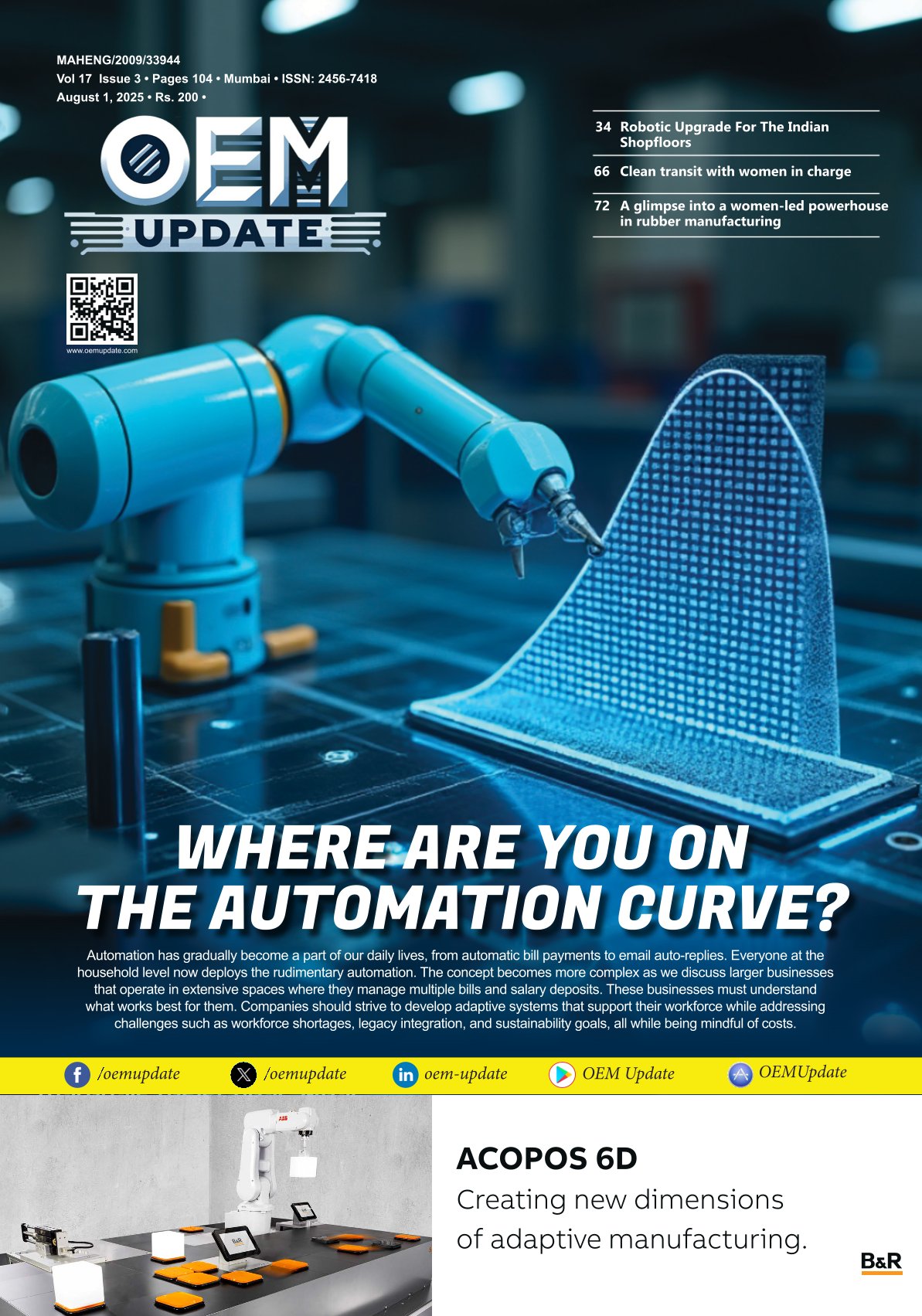Machine alignment with laser trackers
By admin June 13, 2015 12:57 pm IST
The article discusses the applications of laser tracking technology for use with various types of machines that manufacturers use
The popular adage –“If it ain’t broke, don’t fix it” – might be a piece of advice that is dished out often, but perhaps less appropriate if applied in the context of a manufacturing facility. In the world of mass production, machines are put to repetitive tasks each day to churn out large outputs of identical items. At the production volume is key, it is vital to ensure that machines are often checked, so that the manufacturing process never gets disrupted.
When the manufacturing process is halted due to machine misalignment, companies risk losing a significant amount of investment in the form of time delay, reduced productivity, and scraps. However, these costs can be avoided if companies take careful ownership of preventative maintenance, minimising the likelihood of equipment failure or downtime.
In fact, by adopting the preventative maintenance approach, quality management departments can also better ensure that products leaving the facility meet quality benchmarks, as well-maintained machines are the foundation of manufacturing processes. Besides, machine alignment significantly increases the lifespan of tools, which can be expensive to replace. For these reasons, companies have found it necessary to perform machine alignment regularly and efficiently.
Single-use tools Vs. multi-function deviceIn the past, companies used to rely on traditional alignment methods that involved tools such as machinist levels, piano or tight wires, optics (e.g. borescopes, theodolites, etc.), and laser. While these tools worked well in most cases, they often served only single, dedicated function. Using these methods, calibration and alignment would typically take days or even weeks to complete. It was also common to involve multiple instruments, which translated to higher costs and more time spent on setting up in each step.
Naturally, companies sought out better and faster ways for machine alignment to be done. In the early nineties, the use of laser trackers for industrial measurement became widespread. Compared to traditional methods, the laser tracker is a powerful, user-friendly device that can perform multiple measurement tasks in a much shorter time.
This device combines the capabilities of several traditional tools in one, including the ability to: check for plumb, level, squareness, and parallelism; verify and conduct positional checks of rotary axes and multi-axis heads; reposition a part on a table without a rotational bed; perform real-time adjustments of machine beds, rails, and ways; as well as measure bore alignment, coupling, and shaft alignment. More importantly, the laser tracker captures data points in a three-dimensional (3D) space, which provides users with higher precision and versatility in data usage.
Basic mechanics of a laser trackerThe laser tracker is a portable coordinate measuring machine (CMM) that is based on 3D coordinate technology. Fundamentally, these devices provide the benefits of CMMs with the added versatility of being portable, which allows the user to deploy wherever there is a need, without having to move their machine. In addition to being less cost-prohibitive than fixed CMMs, portable CMMs do not require a controlled environment, making it more cost effective to operate and maintain them.
Designed to handle larger working volumes, laser trackers offer extremely accurate measurements over long ranges. Put simply, a laser tracker establishes the precise location of a target in spherical space by measuring two angles and a distance, each time it takes a measurement. It does so by sending a laser beam to a retro-reflective target, which has to be held against the object being measured. The return beam re-enters the laser tracker where the distance to the target can be determined using interferometry or phase shift analysis.
The horizontal and vertical angles to the target probe are determined using precision angular encoders attached to the mechanical axis of a gimbaled beam steering mechanism. Using the two angle measurements and distance determined by the laser, the laser tracker can report the coordinate location of the target probe to extremely high accuracy levels. In addition, the laser tracker can follow or track the target probe as it moves in real time. This unique feature, coupled with the laser tracker’s ability to internally sampling rate of up to 16,000 times per second, enables the user to digitise data on complex surfaces or measure the location of moving objects.
In fact, laser trackers today have impressive measurement ranges and accuracies that provide users with more versatility and better results. For instance, the FARO Laser Tracker Vantage’s radial distance measuring range is 80 metres, and at that range, it captures data at typical accuracies of up to 39 microns (0.039 mm). Weighing just under 18 kg, the Vantage offers portability and flexibility on measuring large parts, no matter where production is located within the plant. Manufacturers can achieve unprecedented speed and efficiency by capturing more with fewer device moves and shorter routines.
Cookie Consent
We use cookies to personalize your experience. By continuing to visit this website you agree to our Terms & Conditions, Privacy Policy and Cookie Policy.



















